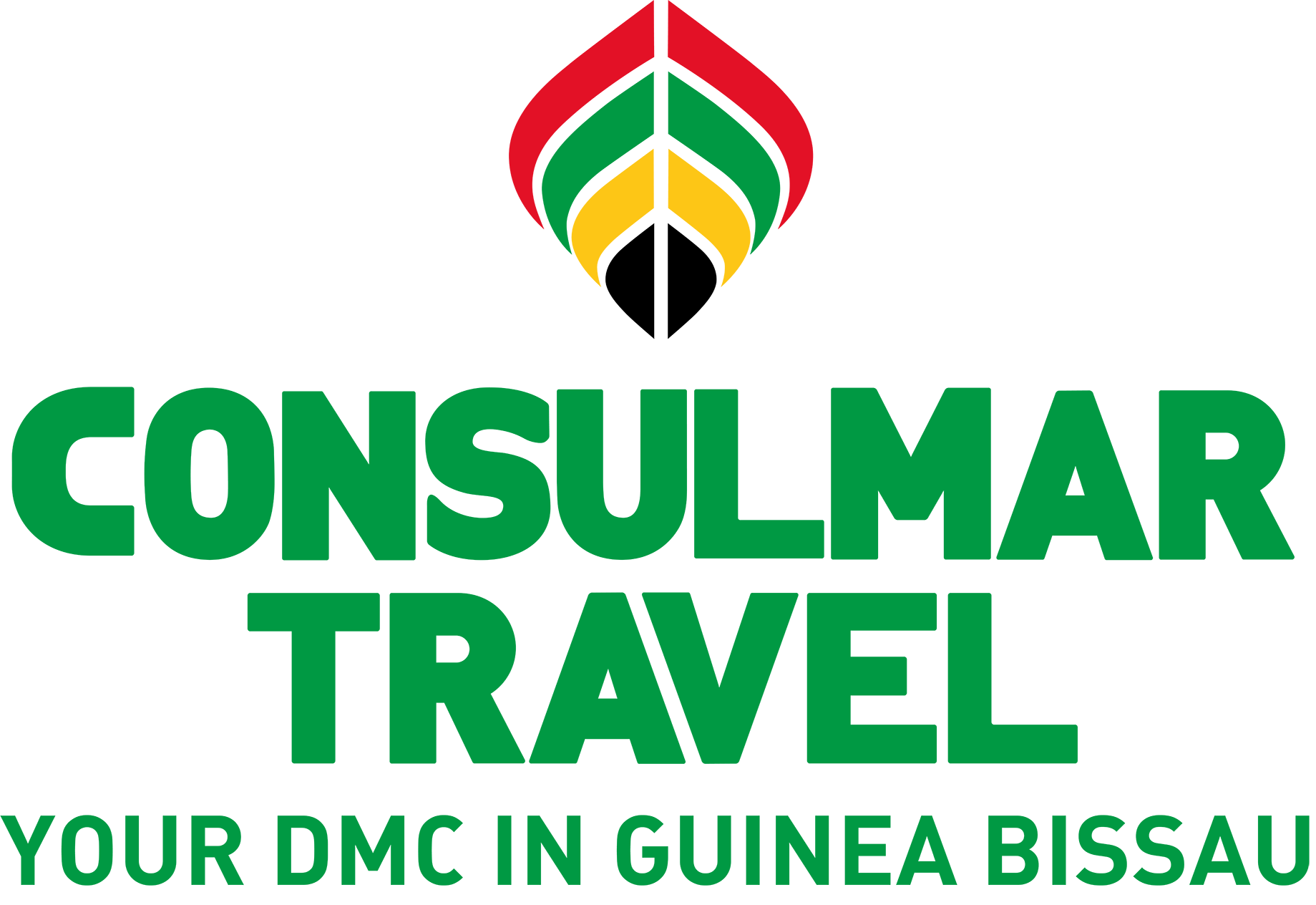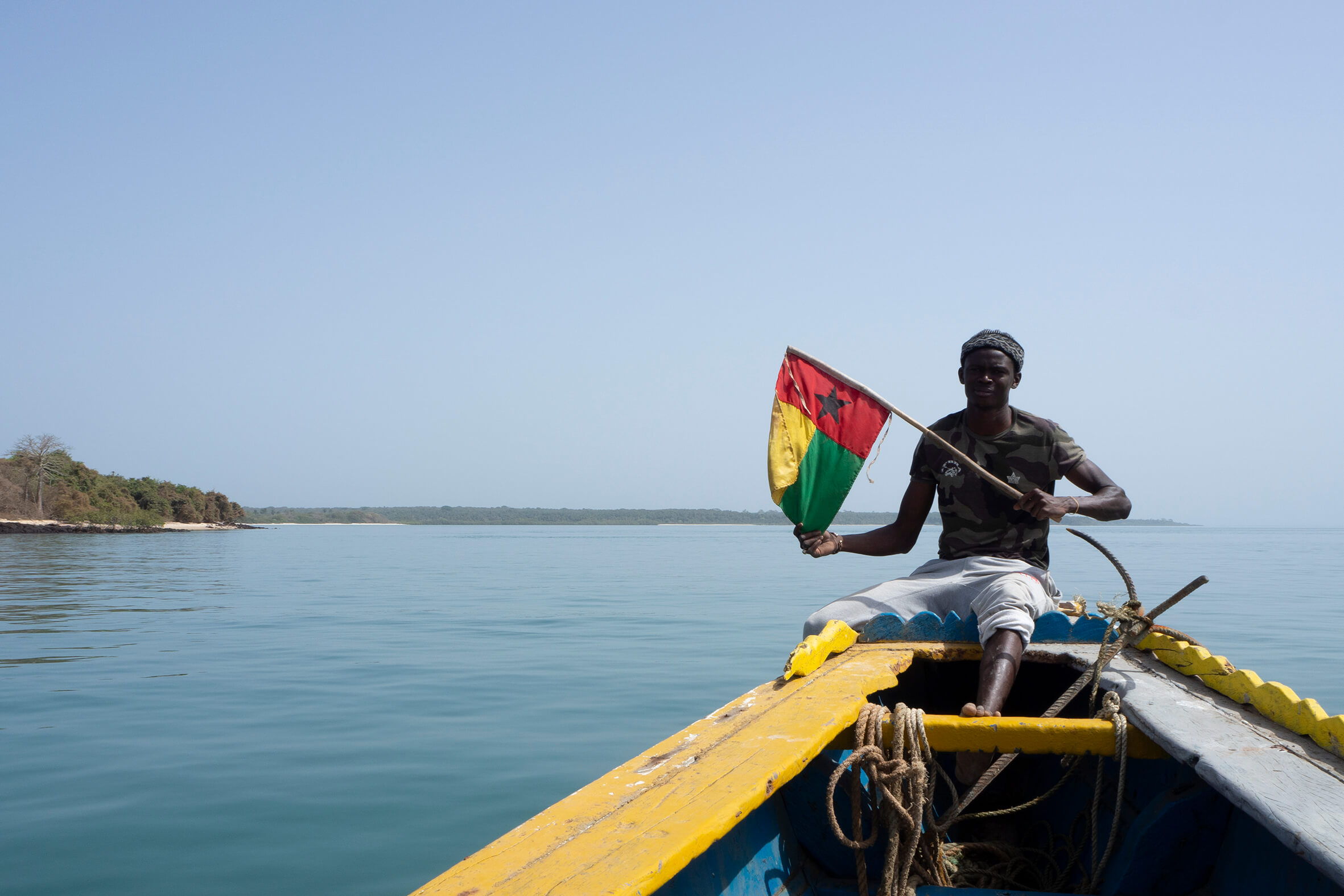The Bijagós archipelago, a group of 88 islands, only twenty-five of which are inhabited, is located throughout the Guinée-Bissau, in West Africa. The main islands to visit are Canhabaque, Orango Island, Bolama Island, Rubane Island and Bubaque.
This isolated paradise is one of the last preserved corners of the planet, without mass tourism and with a virtually untouched nature. Besides its natural riches – turtles, mangroves, saltwater hippopotamuses – the islands are distinguished by their cultural and spiritual value, reflecting the vision of the world of the Bijagó people.
You can easily locate it on Google Maps.
Best time to travel in the Bijagós archipelago
The dry season, from mid-August to mid-May, is the best time to travel: the weather is more pleasant, the humidity is lower and it is easier to move from one island to another. The lodges are open, but it is preferable to book in advance due to the strong demand. The saltwater hippopotamuses are also more visible during this season when they remain in the open lakes.
During the rainy season (May to October), the vegetation is at its peak, but heavy rain complicates navigation and the condition of the routes deteriorates. Many lodges close their doors, so it is not recommended to stay without good logistics.
Between October and January/February, you can also attend the nesting of sea turtles on Poilão Island, a unique ecotouristic experience, where access is regulated for conservation reasons.
Getting to the Bijagós islands: air and land routes and practical advice
To visit the archipelago, you must first take a flight to Bissau, the capital of Guinea-Bissau. The most direct option from Europe is to fly via Lisbon with TAP Air Portugal, but there are also links from Dakar, Casablanca or Cap-Vert, with variable frequencies.
It is also possible to arrive by land from Gambia or Senegal, across the border to São Domingos. In this case, it is important to have a passport with visa, a copy of the reservation of the accommodation or the letter of invitation, and cash in CFA francs before crossing. It is also advisable to check the opening hours of the border and to avoid traveling at night on public transport. As far as possible, it is advisable to coordinate your transfer with Consulmar Travel, who can organize it safely and reliably.
From Bissau, access to the islands is by sea. It is essential to be well informed and to follow the practical travel recommendations.
Main activities and sites of the Bijagós archipelago
Visiting nature: a preserved paradise
The Bijagós archipelago, aUNESCO biosphere reserve, is distinguished by its biodiversity and its preserved landscapes: mangroves, jungles, beaches and savannas.
Islands such as Orango allow you to hike and see saltwater hippopotamuses in freedom. You can also visit the traditional tabankas at Bubaque, Rubane or Canhabaque.
As regards fauna and flora, you will find sea turtles, seals, ducks, migratory birds and unique plant species adapted to the coastal environment.
Sport fishing in Bijagós
Bijagós is one of the best sport fishing destinations in West Africa. You can catch tarpons, requins, crocodiles or carangas, with techniques such as trawl fishing, turtle fishing or bottom fishing.
With local guides and equipped boats, the experience is safe, personalized and in direct contact with nature.
Bijagó culture: a living tradition
The Bijagó communities preserve a strong cultural identity that is expressed in the tabankas, dances, local villages, masks and initiation ceremonies. They live in harmony with nature and maintain highly symbolic ancestral traditions.
Apart from the Bubaque carnival, the Manjaco cultural festival is held on the island of Jeta in January, with dances, music, wood sculptures and rituals of the Manjaco people, ideal for those seeking authentic cultural experiences.
The ceremony of the Vaca Bruto cow herd, originally from the island of Uno and which is spread over other islands, is another highlight. It includes drums, dances and ritual masks, with a deep spiritual value.
History : Bissau and Bolama
Bissau, the capital of Guinea-Bissau, preserves colonial buildings such as the cathedral, the presidential palace and the Bandím market.
Bolama, the first capital of the country, offers ruins and nostalgic monuments that reflect its past as a Portuguese administrative center.
Beaches : nature and calm
The islands offer some of the quietest and most beautiful beaches in Africa. All are perfect for relaxing and exploring the environment at your own pace:
- Bruce (Bubaque) : clear water, white sand and good access.
- Rubane: exclusive setting and luxury village center.
- Canhabaque: wild nature and lack of tourist infrastructure.
Local gastronomy: tradition and savoir-faire
The cuisine of the Bijagós islands is simple, authentic and based on local products such as curry, peanuts, cashew nuts and manioc.
The fresh fish – daurade, thon or metrou – is present in many dishes, thanks to the artisanal fishing, still very ancient in the communities.
One of the most representative dishes is the caldo de mancarra, an opaque stew based on ground peanuts, vegetables and sometimes fish or meat, always accompanied by rice.
A humble but tasty gastronomy that reflects the deep link between the Bijagó people and their environment.
Practical advice: What to bring and what are the cultural norms for your trip to Bijagós?
Ce qu’il faut emporter
Wear light and breathable clothing, but also long clothing to protect you from moisture. Don’t forget a swimsuit, a microfibre towel, comfortable shoes and a mackintosh if you travel between June and October. A hat, sunglasses and sunscreen are also indispensable.
Take a strong repellent against insects, a trousse of basic first aid and check in advance vaccinations and preventive medicines (such as antimalarials). Bring your passport with visa, your vaccination certificate against yellow fever, a copy of your travel insurance and a sufficient amount of cash in CFA francs.
A flashlight, an external battery, a waterproof bag and a small duffel bag will be very useful during your trip.
Cultural norms to be taken into account for your trip
Before leaving, check your documents, your vaccinations and get an insurance with a good coverage. At destination, please note that electricity and internet are limited and that transportation may vary depending on weather or sea conditions.
Respect local customs: ask permission before taking pictures, avoid interfering in the rhythms, be discreet and open. Do not give objects directly to children and do not raise your voice in public.
Travel in a sustainable way: avoid waste, do not buy products containing protected species and support local initiatives. Respect and cultural sensitivity make the difference in Bijagós.
Bijagós is a destination that resembles no other. Ideal for those seeking adventure, authenticity and a real link with the environment, it offers the possibility of a transformative journey. Far from mass tourism, it keeps its essence intact and invites you to discover another rhythm and another way of seeing the world.
At Consulmar Travel, we are experts in organizing tailor-made trips in Guinea-Bissau and Bijagós. We will accompany you at every stage so that you can discover this authentic destination in complete serenity.


